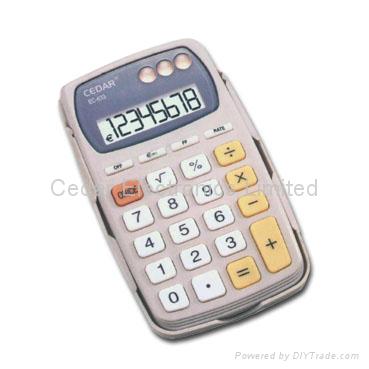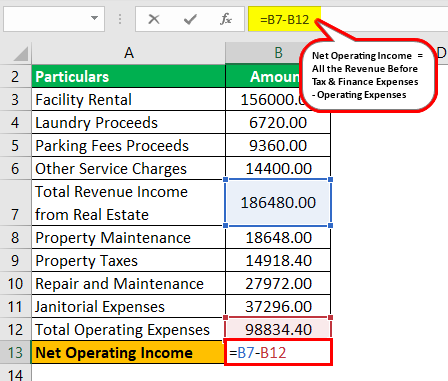What Are Things That Could Increase or Decrease the Contribution Margin Ratio?
Contents:


For example, if a company sells a product that has a positive contribution margin, the product is making enough money to cover its share of fixed costs for the company. The contribution margin ratio takes the analysis a step further to show the percentage of each unit sale that contributes to covering the company’s variable costs and profit. As you will learn in future chapters, in order for businesses to remain profitable, it is important for managers to understand how to measure and manage fixed and variable costs for decision-making. In this chapter, we begin examining the relationship among sales volume, fixed costs, variable costs, and profit in decision-making. We will discuss how to use the concepts of fixed and variable costs and their relationship to profit to determine the sales needed to break even or to reach a desired profit.
In particular, it can be used to estimate the decline in profits if sales drop, and so is a standard tool in the formulation of budgets. Contribution margin is calculated as Revenue – Variable Costs. The contribution margin ratio is calculated as (Revenue – Variable Costs) / Revenue. Investors examine contribution margins to determine if a company is using its revenue effectively. A high contribution margin indicates that a company tends to bring in more money than it spends. Fixed costs are often considered sunk coststhat once spent cannot be recovered.
She is a former CFO for fast-growing tech companies and has Deloitte audit experience. Barbara has an MBA degree from The University of Texas and an active CPA license. When she’s not writing, Barbara likes to research public companies and play social games including Texas hold ‘em poker, bridge, and Mah Jongg. The following frequently asked questions and answers relate to contribution margin. Products with a low or negative contribution margin should likely be discontinued, but there are circumstances where analysis beyond this metric should be reviewed further.
Fitch Affirms Xiaomi at ‘BBB’; Outlook Stable – Fitch Ratings
Fitch Affirms Xiaomi at ‘BBB’; Outlook Stable.
Posted: Thu, 13 Apr 2023 12:07:00 GMT [source]
You will also learn how to plan for changes in selling price or costs, whether a single product, multiple products, or services are involved. As a reminder, fixed costs are business costs that remain the same, no matter how many of your product or services you produce — for example, rent and administrative salaries. Variable costs are those expenses that vary with the quantity of product you produce, such as direct materials or sales commissions. Some people assume variable costs are the same as COGS, but they’re not.
A retailer’s operating income is its sales minus the cost of goods sold and all selling and administrative expenses . Operating income is also the net income before any nonoperating items such as interest revenue, interest expense, gain or loss on the sale of plant assets, etc. Looking at individual products, customers, services or jobs can be especially useful to determine which of your products and services are the most profitable. Fixed expenses are those that don’t change with sales volume or production.
Other related materials
Fixed costs remained unchanged; however, as more units are produced and sold, more of the per-unit sales price is available to contribute to the company’s net income. In our example, the sales revenue from one shirt is $15 and the variable cost of one shirt is $10, so the individual contribution margin is $5. This $5 contribution margin is assumed to first cover fixed costs first and then realized as profit. The contribution margin is a measurement through which we understand how much a company’s net sales will contribute to the fixed expenses and the net profit after covering the variable expenses. So, we deduct the total variable expenses from the net sales while calculating the contribution. The contribution margin ratio is the difference between a company’s sales and variable expenses, expressed as a percentage.
- Carty holds a Bachelor of Arts degree in business administration, with an emphasis on financial management, from Davenport University.
- For every $1 increase in sales, profits increase by the contribution margin ratio.
- GrowthForce accounting services provided through an alliance with SK CPA, PLLC.
- You will first need to obtain a subset of the data file using the capabilities of your statistical analysis computer program.
When it splits its costs into variable costs and fixed costs, your business can calculate its breakeven point in units or dollars. At breakeven, variable and fixed costs are covered by the sales price, but no profit is generated. You can use contribution margin to calculate how much profit your company will make from selling each additional product unit when breakeven is reached through cost-volume-profit analysis.
Calculating the Ratio
Thus, we can forensic accounting defined the ratio very easily if we know the value of the variable costs, fixed costs, units sold, sales, etc. We have to learn a little about contribution margin in learning more about the variable cost ratio. CM is the difference between total sales revenue and total VC, variable costs. Recall that Building Blocks of Managerial Accounting explained the characteristics of fixed and variable costs and introduced the basics of cost behavior. Let’s now apply these behaviors to the concept of contribution margin.
Therefore, the ratio of contribution margin to revenue [CM/R] plus the ratio of variable costs to revenue [VC/R] will always equal 1.0 or 100%. Conceptually, the contribution margin ratio reveals essential information about a manager’s ability to control costs. The fixed costs of $10 million are not included in the formula, however, it is important to make sure the CM dollars are greater than the fixed costs, otherwise, the company is not profitable. A company has revenues of $50 million, the cost of goods sold is $20 million, marketing is $5 million, product delivery fees are $5 million, and fixed costs are $10 million.
The Effect of Operating Leverage on Return on Equity
If they send nine to sixteen students, the fixed cost would be $400 because they will need two vans. We would consider the relevant range to be between one and eight passengers, and the fixed cost in this range would be $200. If they exceed the initial relevant range, the fixed costs would increase to $400 for nine to sixteen passengers. One challenge that may not be highlighted by using this financial analysis is how much resource is required to produce the product. Normally you will want your product to have a contribution margin as high as possible. However a low contribution margin product may be deemed as a sufficient outcome if it uses very little resources of the company to produce and is a high volume sale product.

Only two more steps remain in our quick exercise, starting with the calculation of the contribution margin per unit – the difference between the selling price per unit and variable cost per unit – which equals $30.00. The contribution margin ratio (%) expresses the residual profits generated from each unit of product sold, once all variable costs are subtracted from product revenue. Low contribution margins are present in labor-intensive companies with few fixed expenses, while capital-intensive, industrial companies have higher fixed costs and thus, higher contribution margins. An increase in the contribution margin ratio is always more desirable than a decrease.
The first step in doing the calculation is to take a traditional income statement and recategorize all costs as fixed or variable. The cost that does not get affected by the level of activity achieved by the business entity is known as a fixed cost. Such cost remains fixed until the capacity is increased by capital expenditure. B) If sales increase by 50%, operating income will increase by (6 x .50) or 300%. Variable costs are those that change based on volume or activity level, such as hourly wages, raw materials, inventory, shipping costs, packaging supplies, and so on. Calculating contribution margin is an effective financial analysis tool for making strategic business decisions.
Contribution margin as a measure of efficiency in the operating room
Assuming that the cost of ingredients per pie remains the same regardless of the quantity, your bakery’s net income will increase by 70 cents for each dollar of revenue as well. By multiplying the total actual or forecast sales volume in units for the baseball product, you can calculate sales revenue, variable costs, and contribution margin in dollars for the product in dollars. Selling price per unit times number of units sold for Product A equals total product revenue. Contribution margin , or dollar contribution per unit, is the selling price per unit minus the variable cost per unit. “Contribution” represents the portion of sales revenue that is not consumed by variable costs and so contributes to the coverage of fixed costs. This concept is one of the key building blocks of break-even analysis.
ENERGY VAULT HOLDINGS, INC. Management’s Discussion and Analysis of Financial Condition and Results of Operations (form 10-K) – Marketscreener.com
ENERGY VAULT HOLDINGS, INC. Management’s Discussion and Analysis of Financial Condition and Results of Operations (form 10-K).
Posted: Thu, 13 Apr 2023 10:04:12 GMT [source]
Watch this video from Investopedia reviewing the concept of contribution margin to learn more. Keep in mind that contribution margin per sale first contributes to meeting fixed costs and then to profit. The CVP relationships of many organizations have become more complex recently because many labor-intensive jobs have been replaced by or supplemented with technology, changing both fixed and variable costs. For those organizations that are still labor-intensive, the labor costs tend to be variable costs, since at higher levels of activity there will be a demand for more labor usage. Contribution margin is defined as the difference between revenues and variable costs. It will depend on your industry and product line as to what is deemed a satisfactory or good contribution margin.
Short Answer
Companies may have significant fixed costs that need to be factored in. Which of the following is not a feature of a contribution income statement? Variable selling expenses are not subtracted in calculating contribution margin. A fixed cost is a cost that does not vary with the level of production or sales. Very low or negative contribution margin values indicate economically nonviable products whose manufacturing and sales eat up a large portion of the revenues. Investors and analysts may also attempt to calculate the contribution margin figure for a company’s blockbuster products.
- Fixed costs are independent of production volume and are incurred regardless of the circumstances.
- The following formula shows how to calculate contribution margin ratio.
- After you’ve completed the unit contribution margin calculation, you can also determine the contribution margin by product in total dollars.
- With the first method, the math is done on a per-unit basis.
- Our mission is to empower readers with the most factual and reliable financial information possible to help them make informed decisions for their individual needs.
This could be through technology, increasing capacity or purchasing more https://1investing.in/ive equipment. Management should also use different variations of the CM formula to analyze departments and product lines on a trending basis like the following. Hearst Newspapers participates in various affiliate marketing programs, which means we may get paid commissions on editorially chosen products purchased through our links to retailer sites. You can easily calculate the ratio in the template provided.
It is considered a managerial ratio because companies rarely report margins to the public. Instead, management uses this calculation to help improve internal procedures in the production process. All variable costs are listed _____ on a contribution margin income statement. Represented as amounts, ratios or percentages reveal key information regarding the structure of sales, pricing and commission calculating processes.
C.R. Rao wins top statistics award – a look back at his pioneering work – The Hindu
C.R. Rao wins top statistics award – a look back at his pioneering work.
Posted: Sat, 08 Apr 2023 08:30:00 GMT [source]
Companies that sell products or services that generate higher profit with lower fixed and variable costs have very good operating leverage. The contribution margin ratio is the difference between a company’s sales and variable costs, expressed as a percentage. This ratio shows the amount of money available to cover fixed costs. It is good to have a high contribution margin ratio, as the higher the ratio, the more money per product sold is available to cover all the other expenses.

This site has been developed as aid to instructors and students in managerial accounting. The scenarios contained herein are not intended to reflect effective or ineffective handling of managerial situations. Any resemblance to existing organizations is purely coincidental. The information contained in this article is general in nature and you should consider whether the information is appropriate to your needs. Legal and other matters referred to in this article are of a general nature only and are based on Deputy’s interpretation of laws existing at the time and should not be relied on in place of professional advice.



